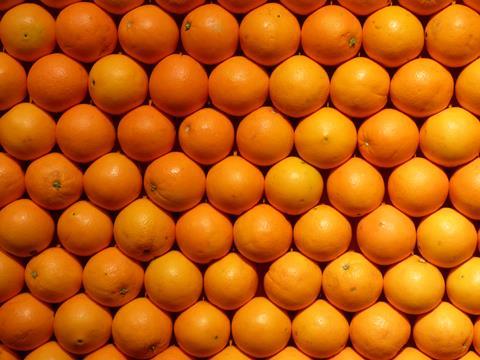Oranges (1.5 million tons) make up the bulk of the exports, and increase by 7.5 % over the previous year (although the SHAFFE secretariat cautions that this may reduce due to the navel fruit drop in South Africa).
Lemon exports of nearly 620 000 tons are 2 % up on 2016; while mandarins
at 546 000 tons are 4 % higher.
Grapefruit (240 000 tons) is almost completely supplied by South Africa, showing an almost 14 % increase over the drought affected 2016 volumes (similar to 2015 levels).
Exports from Peru at 136 500 tons are predicted to be 7 % more than 2016 – the bulk being mandarins at 120 000 tons (7 % higher than 2016).
Uruguay expects an annual growth of 4 % in exports to 111 10 0 tons. Orange exports increase by almost 8 % to 60 000 tons; while lemon (15 000), mandarin
(36 000) and grapefruit (100) exports mirror 2016 volumes.
Argentina (338 000 tons) is predicting a drop in exports across the board –
Lemons (260 000 tons) represent the biggest category, a fall of 7% compared to 2016. Oranges (45 000 tons) drop by 31%, while mandarins (33 000 tons) drop by 33%. Overall Argentinean citrus exports are predicted to drop by 14%.
Australia (219 500 tons) has indicated that their crop is late and hence figures are still provisional – these provisional figures show a similar volume to 2016.
Chilean (257 600 tons) exports increase by 3.5% led by a 13 % increase in mandarin exports to 109 000 tons. Lemon exports (72 000) are expected to decrease by 5 %, while orange exports (75 000) remain unchanged.
South Africa (1.842 million tons) accounts for 63% of southern hemisphere citrus exports and therefore has a big influence on the estimated volumes. The influence of South Africa is greatest in the grapefruit sector (98 % of exports), but is also significant in oranges (76 % market share). As mentioned above the fruit drop phenomenon in navels will impact on the export prediction (the navel focus group has dropped their prediction by 35 000 tons – see below). The original estimate showed a 12 % increase in oranges – this will now be
reduced to an 8.5 % increase. South Africa accounts for 42 % of southern hemisphere lemons – the 263 000 tons represent an increase of 16 % over 2016. Mandarins are the most competitive citrus sector; South Africa’s almost 200 000 tons represent 36% of the southern hemisphere offer – increasing
by 8.5 % over 2016 export volumes.




